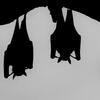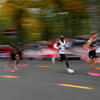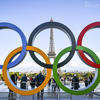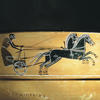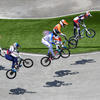You are here
When science breaks Olympic records
05.27.2024, by
Posture, behaviour, preparation… Everything that athletes do is of interest to science. For the Paris 2024 Olympic Games, the CNRS is pulling out all the stops to support the French competitors. The goal is to fine-tune their performance and help them bring home those much-coveted medals, all while avoiding injury.
On your marks…
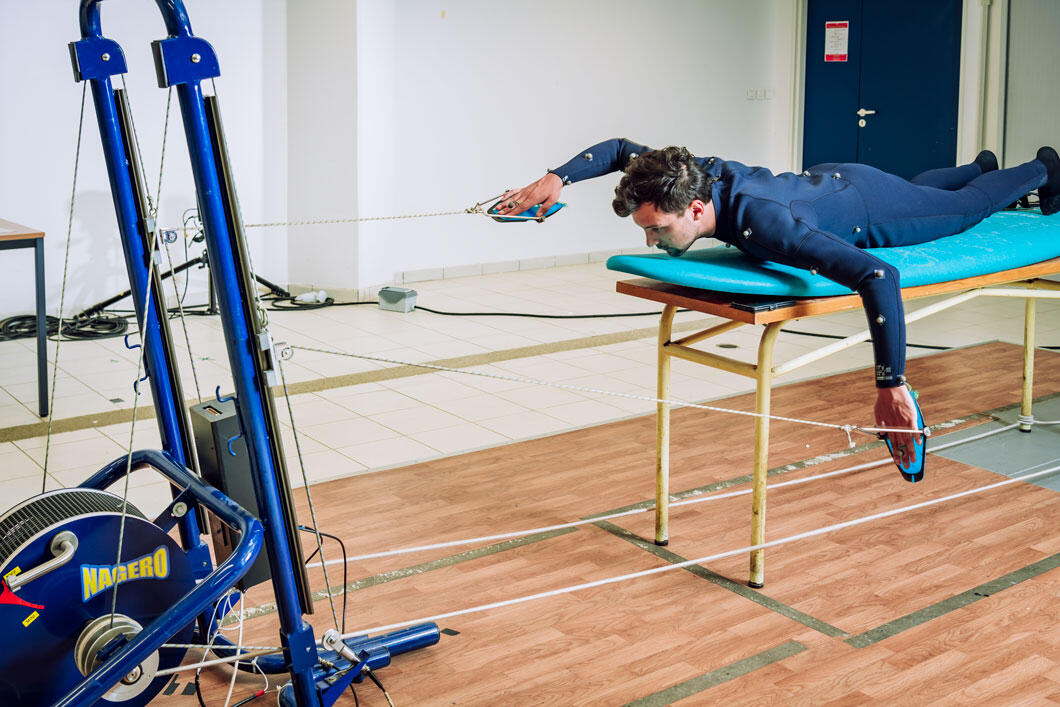
1
Slideshow mode
Does wearing a wetsuit affect a surfer’s performance? To find out, the athletes participate in experiments on dry land. Pads attached to their hands to simulate the resistance of water, reflective markers for the optical monitoring of their movements… A panoply of techniques is used to compare the results of exercise sessions with and without a wetsuit. The researchers at the Pprime Institute (P’) in Poitiers (central western France) will then be able to determine which wetsuit is best for Olympic surfers.
Cyril Frésillon / PPRIME / CNRS Images
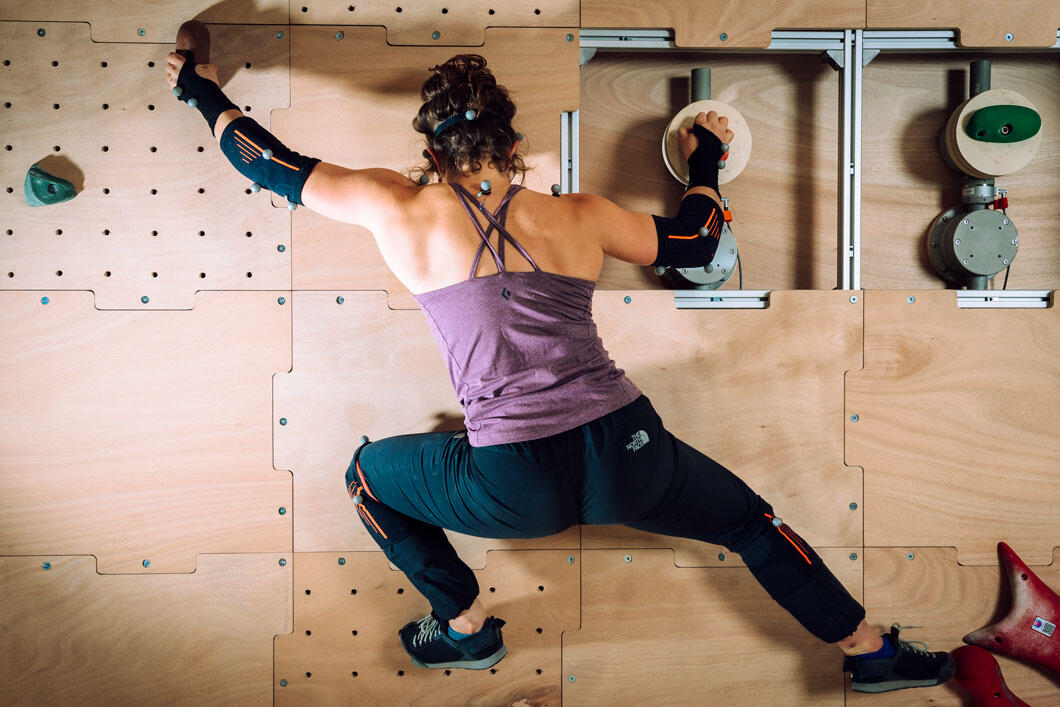
2
Slideshow mode
A relatively new Olympic discipline on the rise, climbing is also the focus of scientific tests. Every position taken by this climber, shown here in action on a prototype wall, is recorded by a battery of video cameras. Force sensors connected to the climbing holds and markers positioned on her body will allow the scientists at the Grenoble Images Speech Signal and Control (Gipsa-lab) to construct a 3D model that will enhance the scientific precision of the analysis of climbers’ motor skills and muscular behaviour patterns.
Cyril Frésillon / GIPSA-lab / CNRS Images
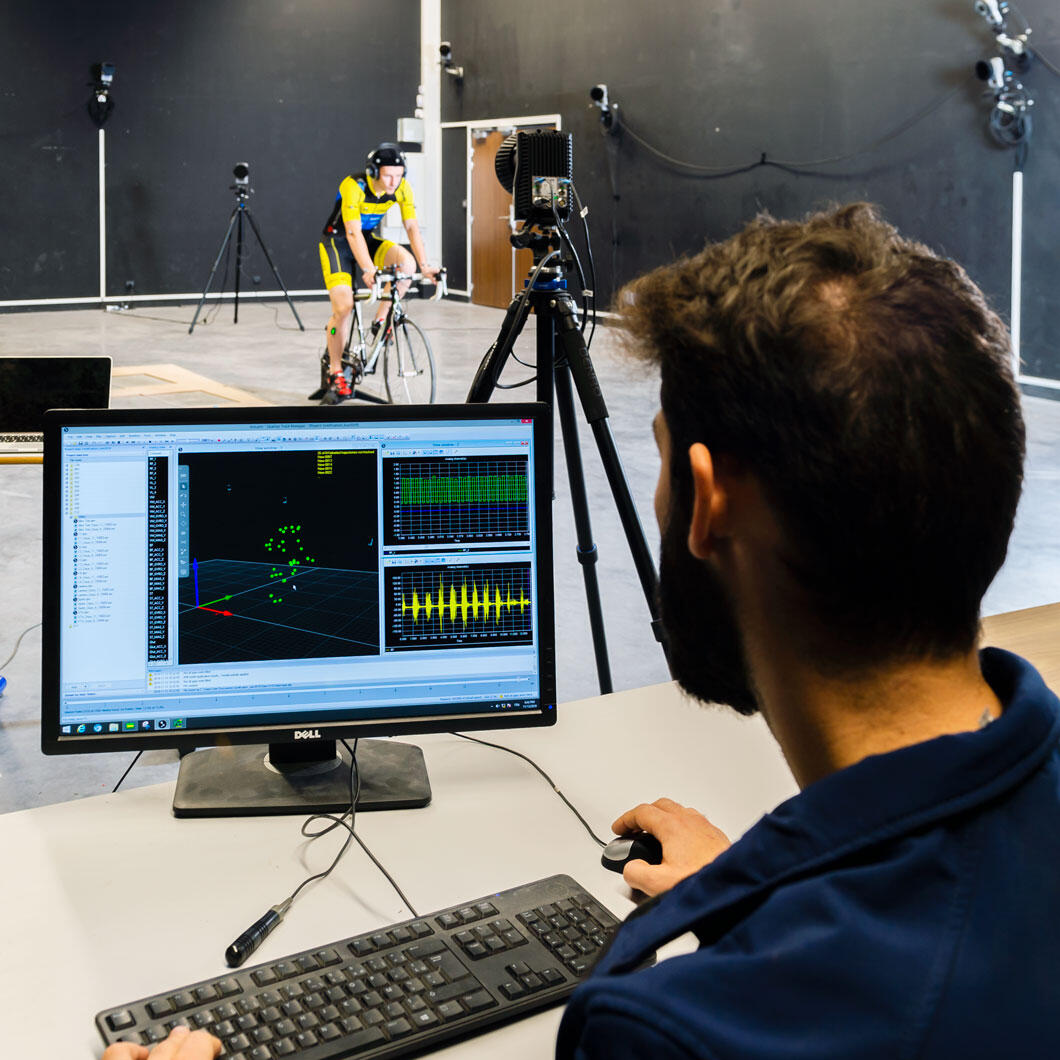
3
Slideshow mode
Before hitting the track in the Olympic velodrome, the cyclists head to the lab for real-time biomechanical tests. Researchers at the Étienne-Jules Marey Institute of Movement Sciences (ISM) in Marseille (southeastern France) subject them to three types of monitoring: movement, muscle activity and pedalling speed. The combination is used to assess the precision of the muscle coordination deployed by the central nervous system to produce the action of pedalling a bicycle.
Cyril Frésillon / ISM / CNRS Images
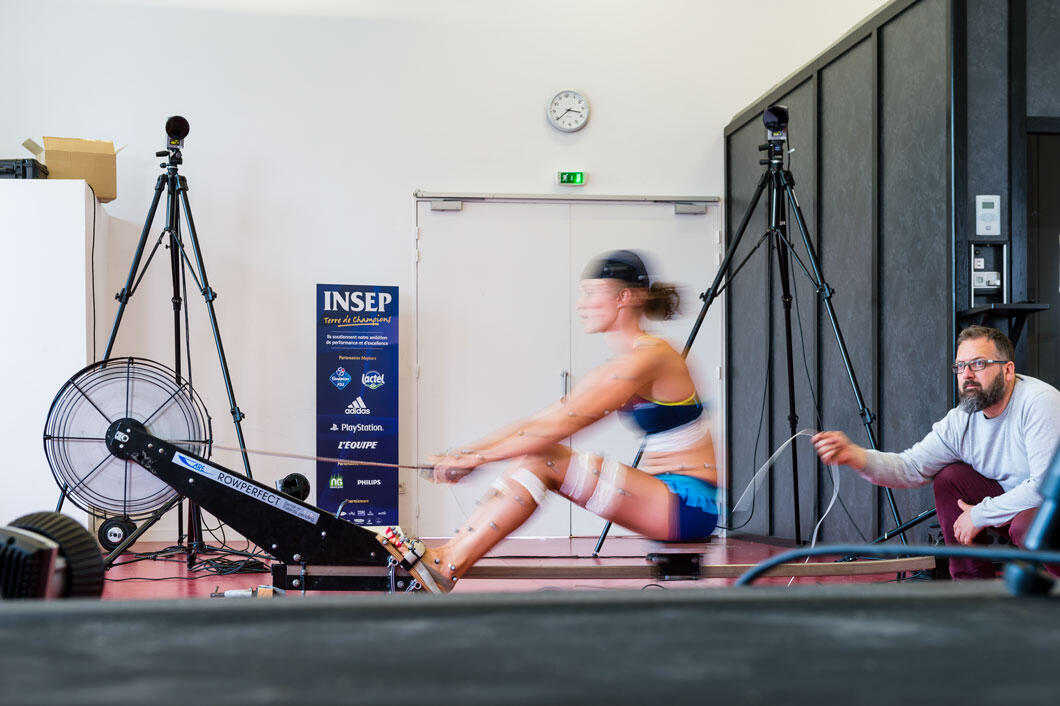
4
Slideshow mode
Pushing, pulling, bending double… A rower’s body is under constant strain and pressure. The athletes’ movements and the forces generated by the oars are recorded using sensors positioned on the body. The data thus collected will of course help the competitors optimise their performance, but will also – more importantly – reduce the risk of injury. In fact, these devices, installed at the Pprime Institute in Poitiers, have shown that each rower develops their own muscular coordination system, resulting in different types of musculoskeletal constraint.
Cyril Frésillon / PPRIME / CNRS Images
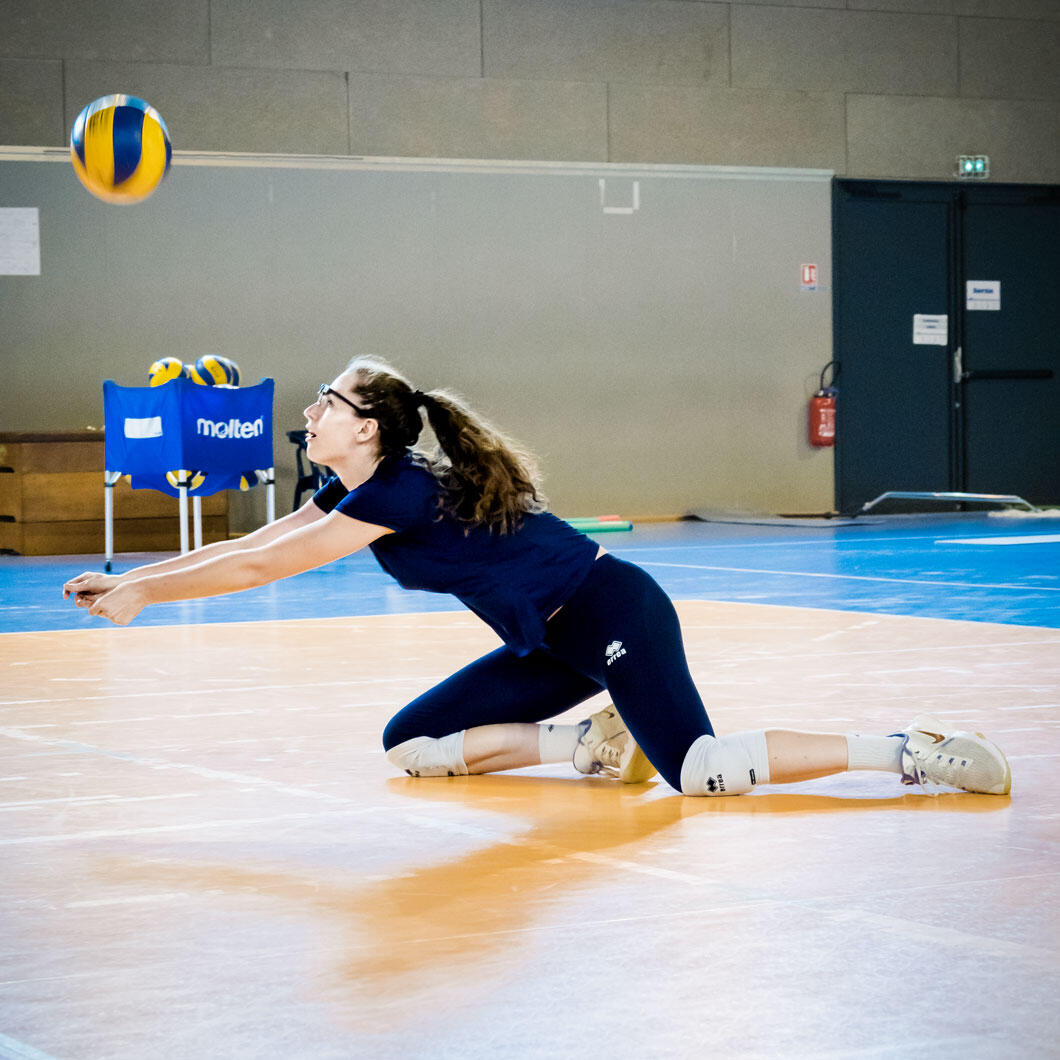
5
Slideshow mode
Strange glasses frame the faces of the players on the French women’s volleyball team. Called “eye trackers”, these devices, developed by the Brain and Cognition Research Centre (CerCo) in Toulouse (southwestern France), record the players’ eye movements as they focus on different zones. The goal is to evaluate the effects of perceptual training in order to improve the quality of the team’s serve-reception. After an initial phase of learning how to read serve trajectories, the athletes took a second test using eye trackers to determine whether changes in visual strategy lead to improved serve reception quality.
David Villa / ScienceImage, CBI / CERCO / CNRS Images
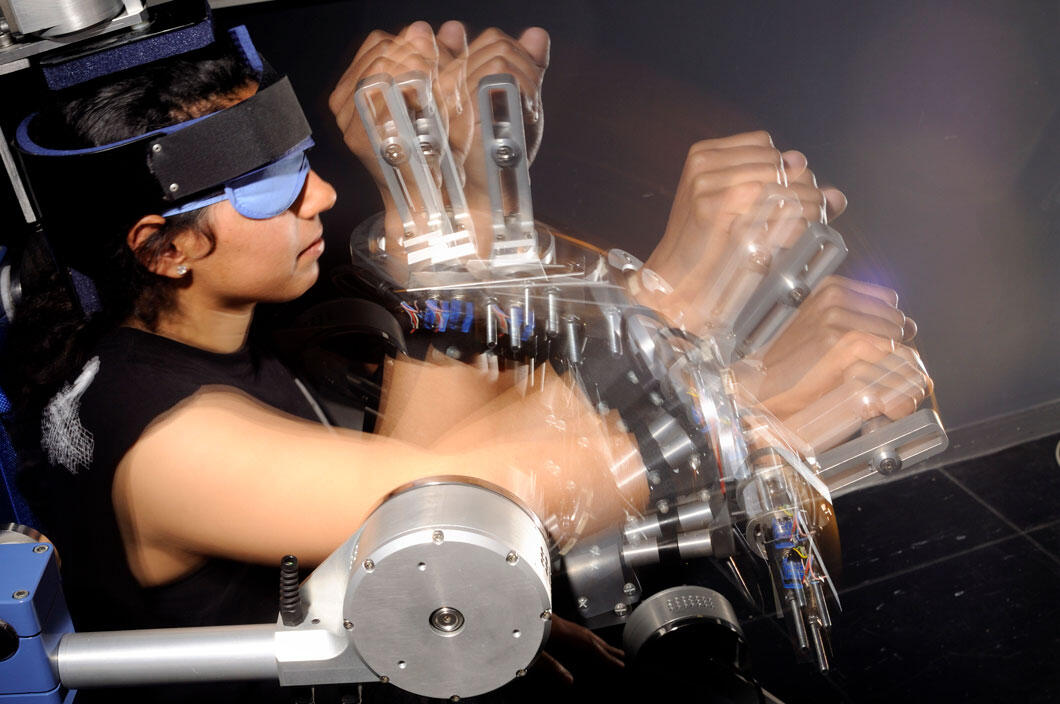
6
Slideshow mode
Blindfolded, with her limbs strapped into an ergometer to measure the angles of her joints, this athlete is working on her sixth sense: proprioception. This is what enables us to know the position and movement of our body parts in space, using sensory receptors called proprioceptors found primarily in the muscles and joints. At the Étienne-Jules Marey Institute of Movement Sciences (ISM), researchers are studying the ability of high-level athletes to reproduce, actively or passively, a given joint angle without the aid of vision, as well as the link between performance level and precision in reproducing an optimal angular position.
Emmanuel Perrin / CNRS Images
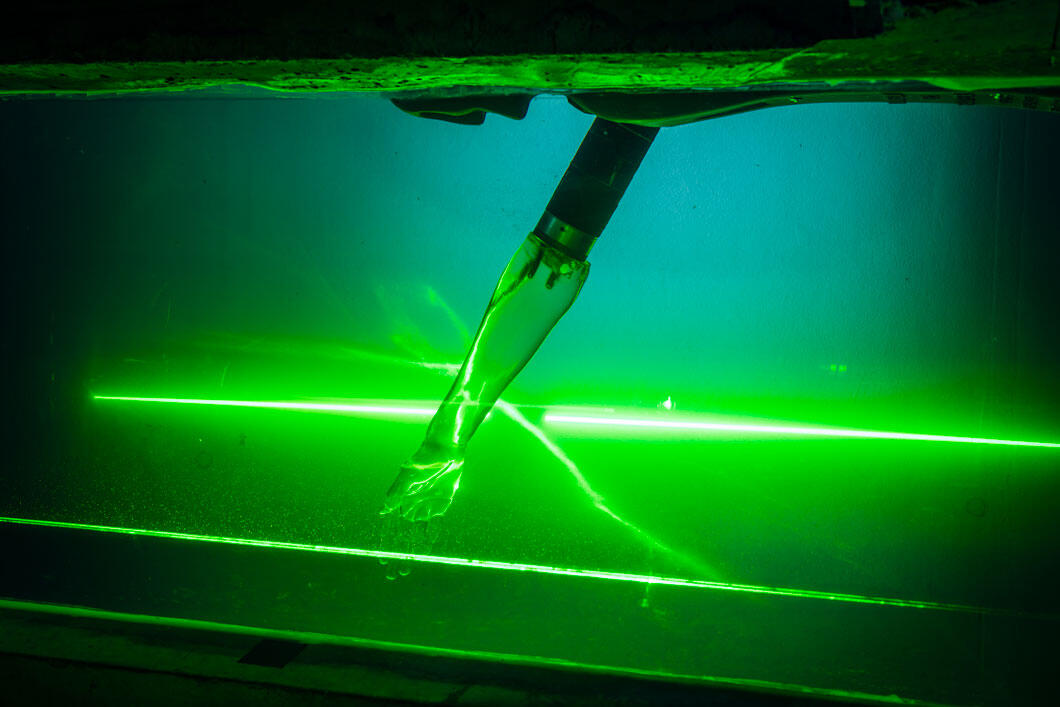
7
Slideshow mode
This moulded cast of a top athlete’s arm is made of a clear epoxy resin with the same density as the human body. Immersed in a tank of water containing laser-illuminated particles, it is used by a research team from the University of Poitiers, working at the Pprime Institute (P’), to simulate the action of swimming, and more specifically to measure the speed of the fluid flowing around the arm. This method gives the scientists a better understanding of the behaviour of water, the source of swimmers’ propulsion. Halfway between basic and applied research, it could help athletes improve their performance at the next Olympic Games.
Cyril Frésillon / PPRIME / CNRS Images
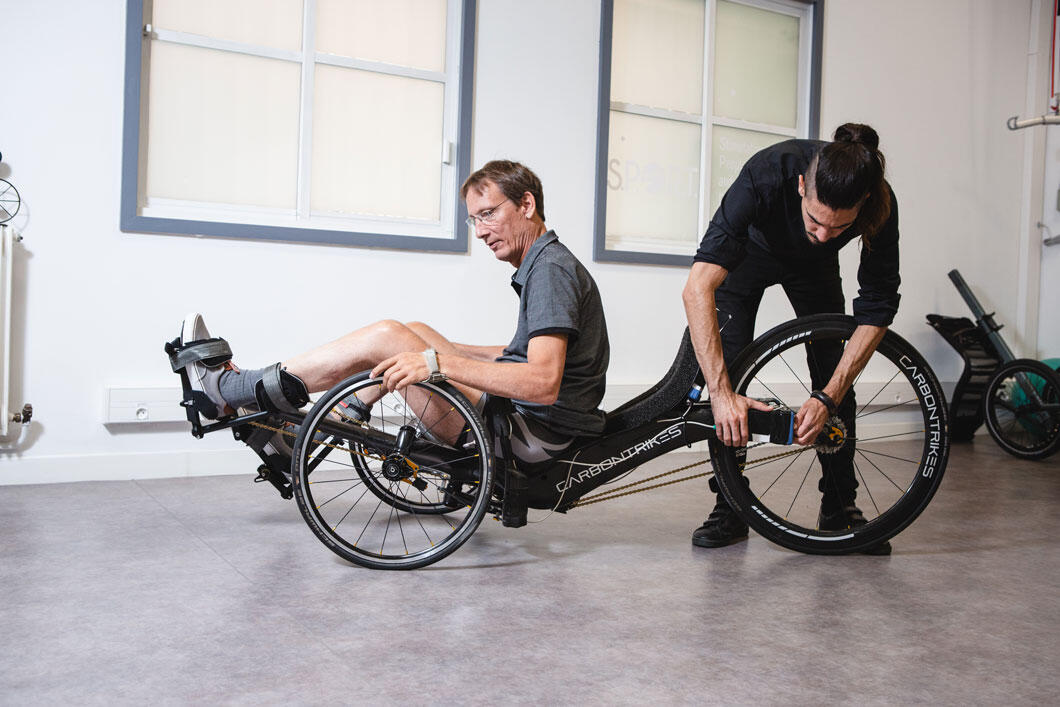
8
Slideshow mode
The researchers Vance Bergeron (left) and Amine Metani (right) prepare for Cybathlon, the Olympic Games for disabled athletes using assistive technologies. Originally a physicist at the ENS physics laboratory in Lyon (southeastern France), Bergeron shifted his focus after a serious accident to neurological rehabilitation and functional electrical stimulation, a technique for remobilising paralysed limbs using low-energy electrical pulses. In 2020, their work led to the founding of the start-up Kurage, which develops AI-driven neurological rehabilitation systems for functional therapy centres and individuals.
Frédérique PLAS / UMR5672 / CNRS Images
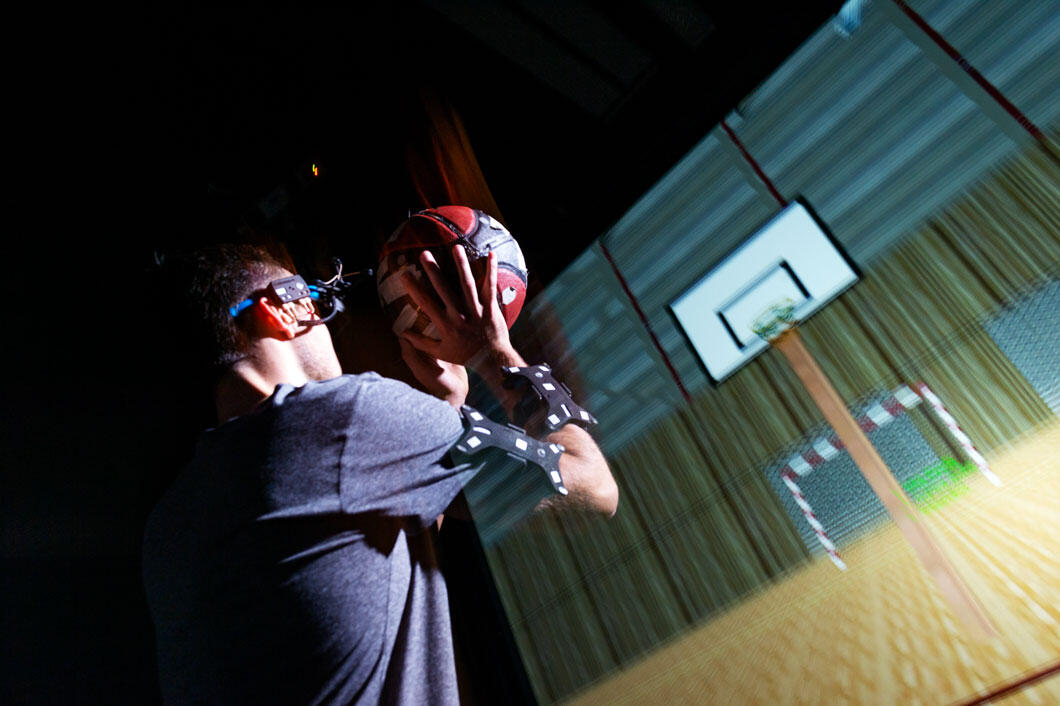
9
Slideshow mode
Even virtual reality is mobilised to help athletes hone their skills and improve performance. The experiment shown here is using the Virtushoot, a ball throwing simulator that replicates a basketball court. By modifying certain parameters of the simulation, the researchers at the Étienne-Jules Marey Institute of Movement Sciences (ISM) are able to identify the mechanisms that control the body’s action, allowing the athlete to learn faster and develop an information uptake strategy that can lead to the perfect throw.
Cyril Frésillon / ISM / CNRS Images
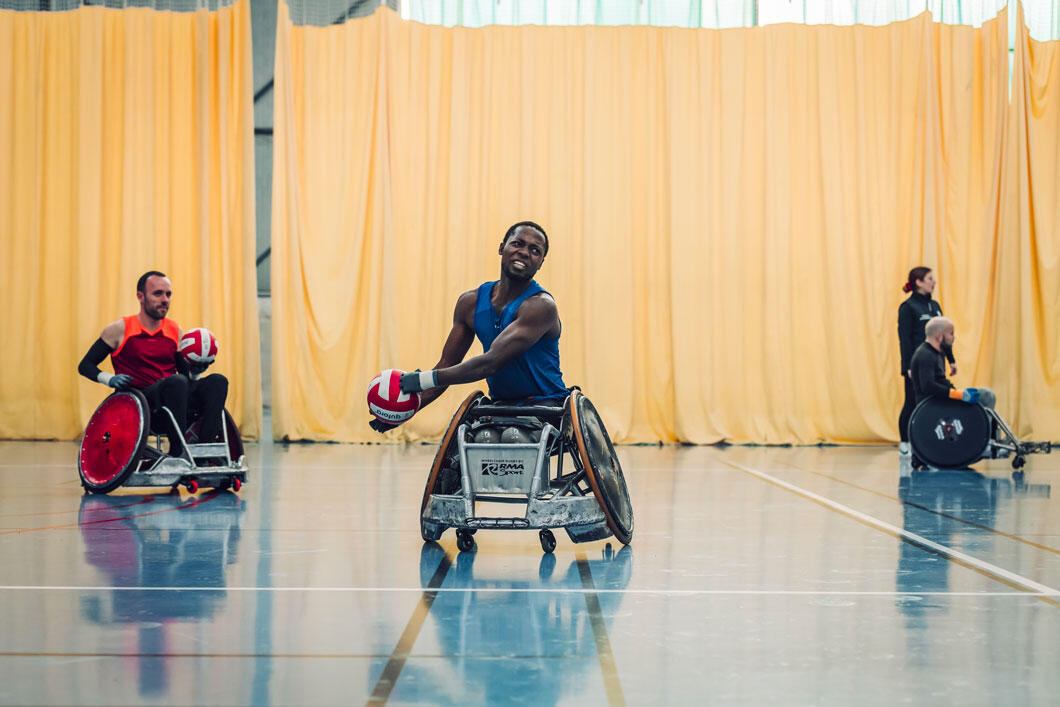
10
Slideshow mode
It might look more like volleyball, but these athletes are actually engaged in a game of wheelchair rugby. Even though the ball is round, the action is rough and tumble. As part of the Paraperf project, which brings together France’s largest scientific consortium for parasport, including researchers from the IMS (Integration from Material to System) laboratory in Bordeaux (southwestern France), these players have the benefit of a specific preparation process that includes the modelling of their strength-speed profiles using an instrumented ergometer. The results are then used to plan and personalise their training.
Cyril Frésillon / IMS / CNRS Images
Explore more
Life
Article
11/26/2025
Article
11/24/2025
Article
09/24/2025
Article
09/01/2025
Article
08/07/2025
Sports
Article
09/13/2023
Article
09/26/2018
Olympic Games
Article
08/15/2024
Article
06/09/2022
Article
08/03/2019
Article
09/26/2018


